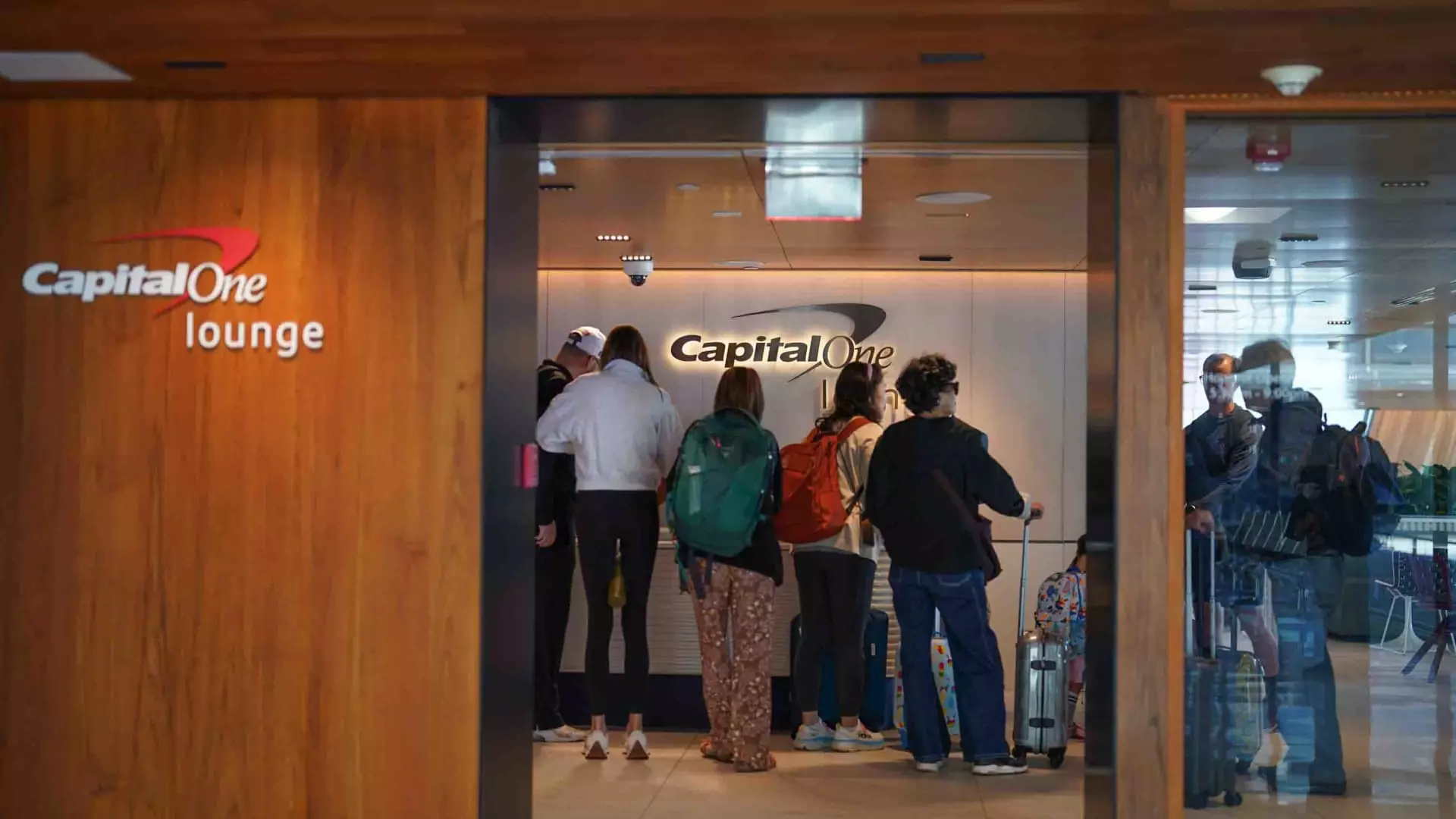As air travel continues to rebound in popularity post-pandemic, the pursuit of comfort and exclusivity at airports has become increasingly competitive. Surprisingly, while the cost of airplane tickets is trending downward, accessing the comforts of an airport lounge is following a new trajectory — one that is steeped in fees and restrictions. Companies like Capital One are now imposing limits on guest access to their lounges to manage overcrowding, prompting a critical adjustment for families and travelers seeking respite from bustling terminals.
Modern airport lounges offer a semblance of serenity, along with complementary amenities such as refreshments, Wi-Fi, and comfortable seating. However, this allure has led to soaring demand, forcing credit card companies to rethink their lounge access policies. By enforcing stricter guest rules and imposing hefty fees for additional access, Capital One is grappling with the juxtaposition of providing luxury while preserving an elite experience. The changes announced recently, where cardholders now face charges for bringing guests into lounges, underscore the increasing rarity of exclusive travel experiences.
Turning Luxury Into a Commodity
The amendments to lounge access at Capital One speak to a larger trend within the travel industry where exclusivity is fading into a commodified service. The $125 fee for each additional cardholder adds a financial burden that is certain to deter many families from enjoying lounge benefits. Moreover, every adult guest now incurs a fee of $45 per visit, while younger guests are still an expense at $25 each. Such costs, accumulated particularly when traveling as a family, may push the once-coveted lounge experience out of reach for the average traveler.
In their defense, Capital One argues that these measures are a response to overcrowding, aiming to maintain a quality experience for a select few. However, this admission highlights deeper issues within the airport environment itself, where overcrowding is becoming the norm rather than the exception. There is a troubling irony in the fact that the lounge experience — once a hallmark of premium service — is transforming into an exclusive club that only the highest spenders can truly enjoy.
Comparative Pricing on Premium Travel Cards
When analyzing the value proposition of the Venture X card, which retails for $395 annually, it becomes evident that the landscape for premium travel cards is increasingly contested. Comparing this with American Express’s Platinum card at $695 and JPMorgan Chase’s fee of $550 for the Chase Sapphire Reserve indicates a pricing spectrum; however, it’s not just about card cost. The key differentiator here lies in lounge access and other perks.
Yet, one must consider whether the advantages justify the potential expense of guest allowances. Are travelers truly getting what they pay for, or is the prestige of access coming at the cost of personal enjoyment? The loyalty programs associated with these cards, combined with the increasing lounge access fees, create a convoluted matrix of value that could dissuade consumers from engaging with these offerings altogether.
Implications of Changing Lounge Access Policies
The industry shift has also been echoed by major airline companies implementing revised standards on lounge accessibility. Delta Air Lines, for instance, has transformed its access rules by eliminating unlimited visits, thus encouraging more controlled traffic in its premium spaces. This represents a crucial turning point where airlines acknowledge that the quality of the lounge experience must come at the expense of access volume.
It begs the question: Will these changes ultimately diminish the allure of airport lounges, forcing them into obscurity as travelers opt for alternatives that offer fewer restrictions? The potential for modernization and expansion remains, but at what cost? As companies like Capital One adapt to emerging pressures, the experience of luxury travel risks devolving into a series of prohibitive economic choices rather than one defined by ease and comfort.
Ultimately, everyone has different expectations when it comes to travel and space investment. The essential aspect for consumers lies in how these elevated costs and evolving policies will shape their travel experiences moving forward. As we adapt to these new norms, the question remains whether premium travel can sustain its luxurious claim amid tightening restrictions and escalating prices.


Leave a Reply